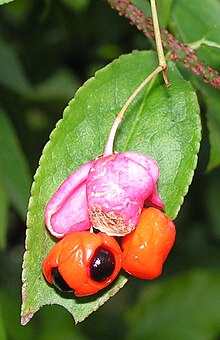| Euonymus verrucosus | |
|---|---|
 | |
| Scientific classification | |
| Kingdom: | Plantae |
| Clade: | Tracheophytes |
| Clade: | Angiosperms |
| Clade: | Eudicots |
| Clade: | Rosids |
| Order: | Celastrales |
| Family: | Celastraceae |
| Genus: | Euonymus |
| Species: | E. verrucosus |
| Binomial name | |
| Euonymus verrucosus Scop. | |
Euonymus verrucosus is a species of flowering plant belonging to the family Celastraceae. [1]
Its native range is Central Europe to Central Japan. [1]